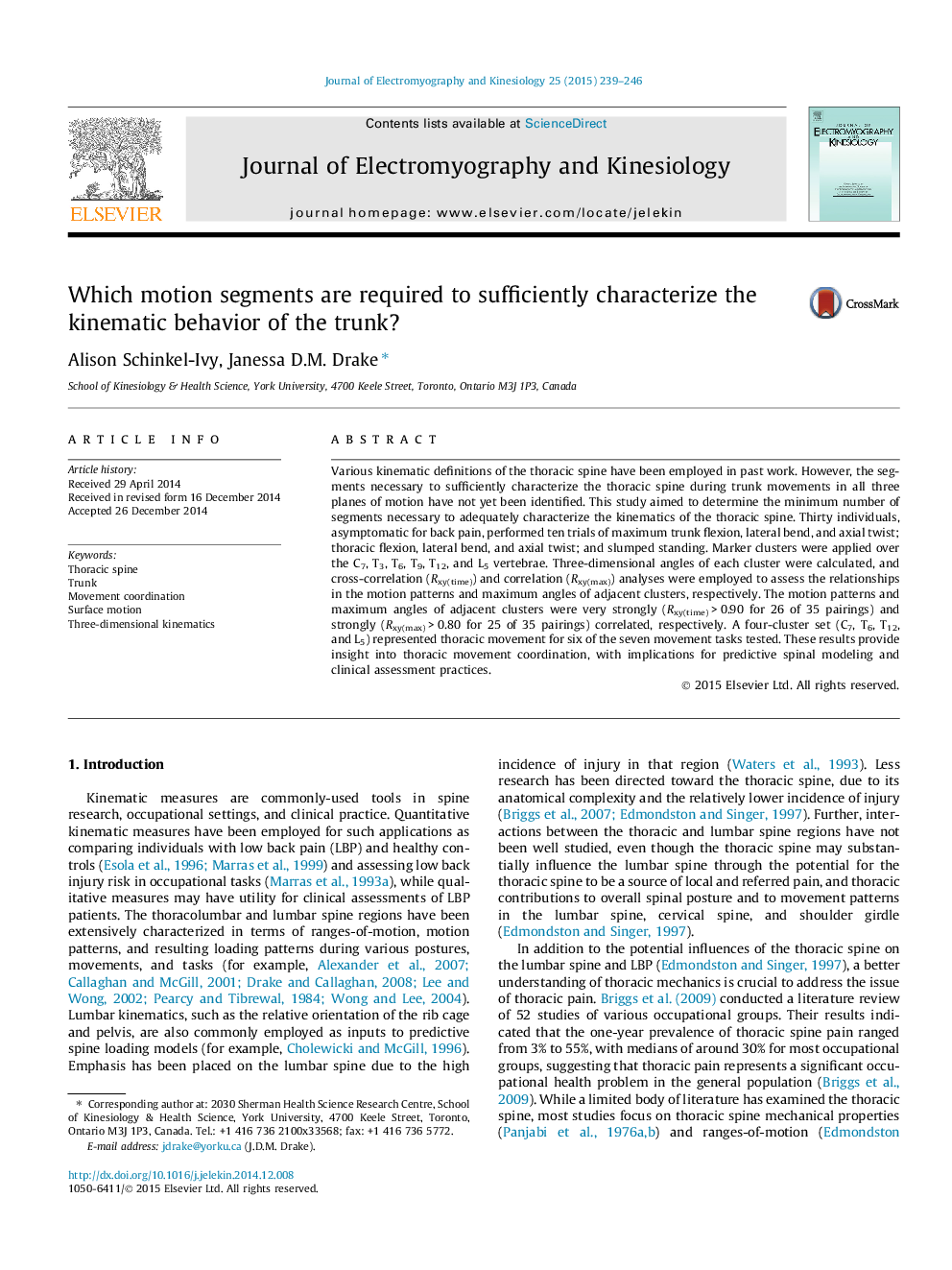| Article ID | Journal | Published Year | Pages | File Type |
|---|---|---|---|---|
| 4064681 | Journal of Electromyography and Kinesiology | 2015 | 8 Pages |
Various kinematic definitions of the thoracic spine have been employed in past work. However, the segments necessary to sufficiently characterize the thoracic spine during trunk movements in all three planes of motion have not yet been identified. This study aimed to determine the minimum number of segments necessary to adequately characterize the kinematics of the thoracic spine. Thirty individuals, asymptomatic for back pain, performed ten trials of maximum trunk flexion, lateral bend, and axial twist; thoracic flexion, lateral bend, and axial twist; and slumped standing. Marker clusters were applied over the C7, T3, T6, T9, T12, and L5 vertebrae. Three-dimensional angles of each cluster were calculated, and cross-correlation (Rxy(time)) and correlation (Rxy(max)) analyses were employed to assess the relationships in the motion patterns and maximum angles of adjacent clusters, respectively. The motion patterns and maximum angles of adjacent clusters were very strongly (Rxy(time) > 0.90 for 26 of 35 pairings) and strongly (Rxy(max) > 0.80 for 25 of 35 pairings) correlated, respectively. A four-cluster set (C7, T6, T12, and L5) represented thoracic movement for six of the seven movement tasks tested. These results provide insight into thoracic movement coordination, with implications for predictive spinal modeling and clinical assessment practices.
